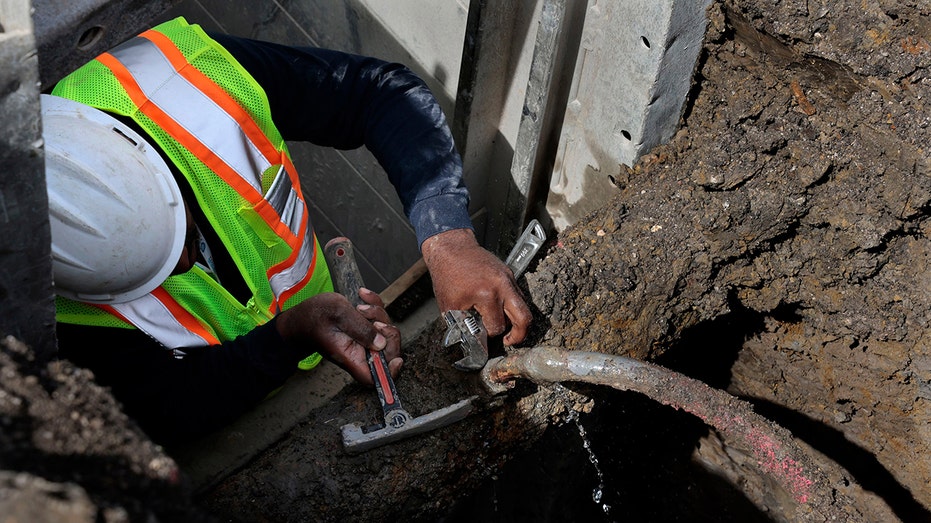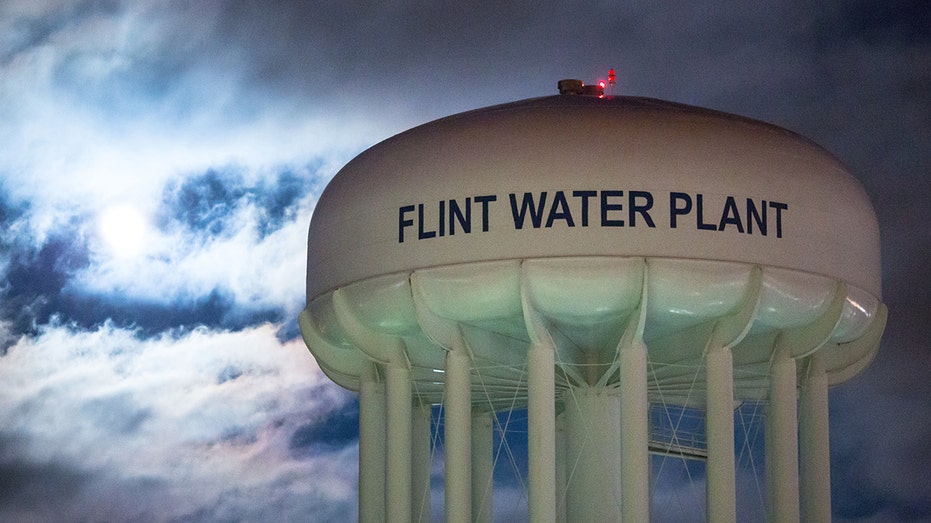Biden administration proposes to require lead pipes to be replaced within 10 years
The Biden administration said new requirements to replace lead pipes nationwide would cost $15 billion
Plumber speaks out over Biden’s water heater crackdown
Master plumber Chris Sbrocco joins ‘The Big Money Show’ to discuss the Biden administration’s controversial decision to target water heaters in its latest environmental push.
The Biden administration on Thursday proposed a plan to require drinking water pipes that contain lead to be replaced within 10 years.
The proposal would strengthen the Environmental Protection Agency's (EPA) Lead and Copper Rule and allocate $15 billion from the Bipartisan Infrastructure Law to replace lead service lines in water systems across the country.
Administration officials say President Biden is committed to replacing all lead pipes in the nation — an action that comes nearly a decade after the Flint water crisis. In 2014, nearly 100,000 people were exposed to elevated lead levels after the Michigan city switched its water supply, which caused lead pipes to corrode and contaminated the city's drinking water.
There is no safe level of lead exposure. Children exposed to elevated lead levels can suffer physical and mental harm and neurological damage.
LOUISIANA OIL LEAK SOURCE STILL UNKNOWN AFTER 1M GALLONS SPILL INTO GULF, COAST GUARD SAYS

Blackhawk Sewer and Water contractor Khaild Waarith fixes a leaking lead service pipe ahead of service line replacement in the 3100 block of South Ridgeway Avenue in Chicago on April 10. (Antonio Perez/Chicago Tribune/Tribune News Service via Getty Images / Getty Images)
"This is a public health concern that has unfortunately spanned generations and an issue that has disproportionately impacted low income and minority communities," EPA Administrator Michael Regan told reporters on a press call. "Everyone in this country should be able to turn on their tap for a glass of water and know that it's safe to drink."
Clean water activist Mona Hanna-Attisha, a pediatrician whose research uncovered the Flint water crisis, called the new regulations a "game changer."
"This rule will create a measurable impact on the lives of our kids, also in the well-being and the global competitiveness of our nation," Hanna-Attisha told reporters. "This also makes economic sense. We have paid the price of our inaction from decreased economic productivity, health care cost, education, across criminal justice costs, the list goes on. We will reap the massive societal savings of doing this important, proactive work. This rule is historic. It is a game changer for kids and communities everywhere."
There are an estimated 9.2 million lead service lines that provide water to communities in the U.S., according to the EPA.
MANUFACTURERS TO EPA: WE'RE LEADING AIR QUALITY GAINS, WE DON'T NEED MORE RULES

A federal state of emergency was declared in Flint, Michigan, nearly a decade ago due to dangerous levels of contamination in the water supply. (Brett Carlsen/Getty Images / Getty Images)
The EPA's proposed rule would replace those pipes, improve corrosion control treatment in water systems, improve tap sampling and strengthen regulations to reduce lead exposure.
Under the current rule, if 10 percent of water samples are found to have at least 15 parts per billion of lead, water systems are required to take mitigation action. The EPA's proposal would reduce that threshold to 10 parts per billion.
"Moving from 15 parts per billion to 10 parts per billion is a very significant public health improvement. It is going to compel a significant number of water systems to be taking interim measures like corrosion control," said Radhika Fox, the EPA's chief water regulator.

Environmental Protection Agency Administrator Michael Stanley Regan speaks during the anniversary of the Inflation Reduction Act Event at the White House in Washington D.C., on Aug. 16. (Celal Gunes/Anadolu Agency via Getty Images / Getty Images)
An EPA cost benefit analysis estimated compliance costs at $2.1 billion to $3.6 billion annually, while measuring benefits at $9.8 billion to $34.8 billion annually. Those benefits include preventing the loss of IQ points for children, avoided deaths and avoided heart disease for adults, which are "priceless," Fox said.
CLICK HERE TO GET THE FOX BUSINESS APP
Once the proposed rule is published in the Federal Register, the EPA will accept comments from the public for a 60-day period. On Jan. 16, 2024, the agency will host a public hearing for verbal comments.
"Getting the lead out means healthier children and healthier adults. It means less hospital visits and lower health care costs. And it means good paying jobs in our overburdened and underserved communities all across the country," Regan said. "We've already made significant progress, but this is only the beginning. Every day we are one step closer to a 100% lead free future for all. And our agency will not rest until we make this dream a reality."





















